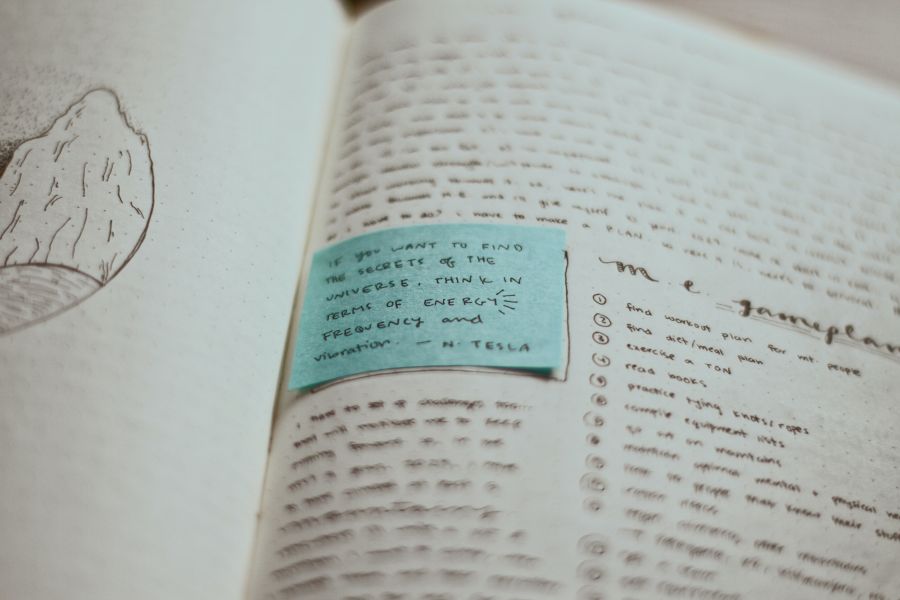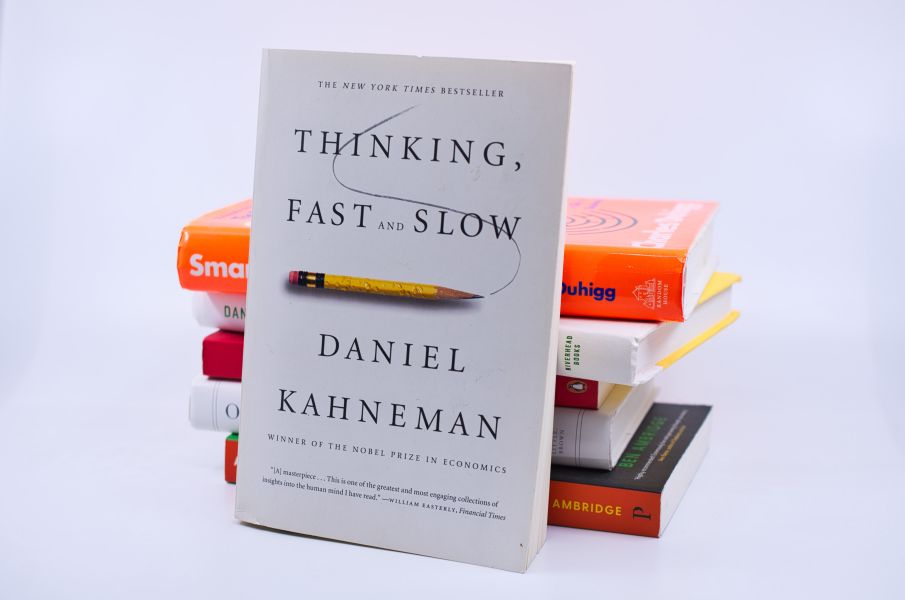十三陵英文导游词
THE MING TOMBS
The Ming Tombs are 40 kilometers north of Beijing City on the southern slopes of Tianshou Mountain. They are the burial grounds of 13 Ming Dynasty emperors. In July 2003 the site was designated a world cultural heritage site by UNESCO.
Empress Xu died in the 5th year of Yongle (1407). Zhu Di sent
Zhao Hong, secretary of the Ministry of Rites and a geomancer----Liao Junqing along with many others to Beijing in search of an auspicious place for the tombs. It is said that this group of people first selected the area of Tu Jia Ying, which means slaughter-house, and as such, it couldn't be used as the burial ground. Next they selected the foot of Yangshan Mountain, Changping. However, since the surname of the emperor (Zhu) is a homophone for pig and because a village named 'wolf mouth ravine' was located there, they decided against using that area. Later, they found Yan-jiatai west of Beijing. Again, since 'Yanjia' was the homonym of the death of the emperor, it was also deemed unsuitable. It was not until the 7th year of Yongle (1409), that they finally chose the present Heavenly Longevity Mountain as their cemetery grounds.
The whole area covers 40 square kilometers. It has mountains to its east, west and north, and Dragon Mountain and Tiger Mountain are on either side of its southern entrance. The 13 tombs go from north to south. They are arranged in the manner of the Imperial Palace, with the administration area in the front and living quarters in the rear. In front of the tombs are divine passes, stone archways and steel towers. The Precious City and Ming Tower stand over the Underground Palace.
There were 16 emperors during the Ming Dynasty. Buried in the Ming tombs, are 13 Ming emperors and 23 empresses, as well as many concubines, princes, princesses and maids. The other 3 emperors, Emperor Zhu Yuanzhang, Zhu Yunwen and Zhu Qiyu are buried in other locations.
The founder of the Ming Dynasty, Zhu Yuanzhang, established his capital in present day Nanjing where he was buried after his death. His tomb is called Xiaoling (Tomb of Filial Piety).
The body of the second emperor of the Ming, Zhu Yunwen, is missing. Some said that he died in a fire, while others said that he went to a temple and became a monk. There is no final conclusion yet.
The seventh Ming Emperor Zhu Qiyu, was buried as a prince by his elder brother Zhu Qizhen at Jinshankou, a western suburb of Beijing, because in the Tumubao Upheaval, Emperor Zhu Qizhen became a captive and the younger brother of Zhu Qizhen. Zhu Qiyu was chosen as the new emperor, but later Zhu Qizhen was back and proclaimed his re-enthronement in the Seizing Gate Upheaval.
The Memorial Arch was built in the 19th year of Jiajing (1540) as a symbol of the Ming Tombs. It is 14 meters high and 28. 86 meters wide, and has 5 arches supported by 6 pillars with beautiful bas-relief carvings of lions, dragons and lotus flowers. The Memorial Arch is the biggest and the most exquisite stone arch preserved in the country today. The major designs of dragon and cloud decorations reflect the character of imperial architecture. In addition, it also demonstrates the skillful artistry of the Ming craftsmen.
The Big Palace Gate is the front gate of the Ming Tombs, and is more commonly known as Big Red Gate. Facing south, there are three arch entrances to the gate, the main inlet to the Ming Tombs. Flanking the gate are two stone tablets, inscribed with orders for the emperor, officials and other people to dismount, before entering into the tomb area. If they did not obey, they would be punished for their disrespect. The rules governing the Ming Tombs in the Ming Dynasty, stipulate that one who sneaks into the tomb area to pick firewood and break twigs would be flogged. Those who came to fetch dirt and stone would be beheaded. Those who entered arbitrarily into the tomb area would be flogged a hundred times.
The Tablet House was built in the 10th year of Xuande (1435), and stands about 10 meters high with two tiers of eaves. A huge tablet stands in the middle of the Tablet House. The front side bears an inscription by Emperor Renzong for Chengzu. The reverse side is a poem by Qing Emperor Qianlong recording in detail the conditions of the broken Changling, Yongling, Dingling and Xiling. On the east side is the record of expenditures for repairing the Ming Tombs by the Qing government. On the west side is an epitaph by Qing Emperor Jiaqing. It was written in the 9th year of Jiaqing (1804) describing the cause of the fall of the Ming Dynasty.
On the north side of the Tablet House, stands a group of stone carvings (36 in all). Behind the house, there are two stone pillars. Beyond the pillars are stone animals and other statues. Lions, Xie Zhi, camels, elephants, and Qi Lin horses .All of the animals are in two pairs. Two stand, while the other two kneel. It is followed by the statues of military officers, civil officials and officials of merit, four in each group. These stone animals and statues were made in the 10th year of Xuande (1435). They reflect the imperial power when he was alive and the imperial dignity after he was deceased. The animals and statues were created using whole blocks of stone weighing a couple of tons and each was delicately and masterfully carved.
Here stands Ling Xing Gate, also known as the unique Dragon and Phoenix Gate, with the meaning of the Gate of Heaven. The gate is pierced with six door leaves, attached to three archways. The top of the central section of the three archways is decorated with flames and precious pearl, so it is also known as the Flame Archway. To the north of the Dragon and Phoenix Gate there lays a seven-arch marble bridge, leading to the gate of Changling. To the east of the seven-arch bridge stands an old five-arch bridge, which was the original site of the seven-arch bridge.
Actually we are standing on the axle line of the Ming Tombs, otherwise known as the Sacred Way or the Tomb path. We passed the Memorial Arch, the Big Palace Gate, the Tablet House, Sacred Way, stone animals and statues, and Ling Xing Gate. This seven-kilometer long sacred pathway leads from south to north, all the way to the Gate of Changling.
Now, we are moving to Chang Ling. Changling is the first tomb built in the Ming Tombs area, covering 10 hectares and containing Emperor Zhu Di and his empress Xu.
Zhu Di (Chengzu) of the Ming Dynasty was the fourth son of the first Emperor Zhu Yuanzhang, born in 1360. Zhu Di was conferred the title of the prince of Yan in the 3rd year of Hongwu (1370). He was appointed at Beiping. After the death of Zhu Yuanzhang (the first Ming Emperor), Zhu Di used the pretext of eliminating evil officials at the side of Emperor Jianwen to lead an army expedition down south to Nanjing. He seized the throne in the 4th year of Jianwen (1402) and ascended the throne in June inside the Hall of Ancestral Worship in Nanjing. Zhu Di was an emperor of outstanding accomplishment in the Ming Dynasty. As soon as he became the prince of Yan, he led the generals out to battle. He had great achievements in calming down the north. After he took over his nephew's power and became the emperor, he still went out to battle throughout the country and consolidated the rule of the Ming Dynasty. He made the important decision to move the capital to Beijing. During the rule of Zhu Di, magnificent developments were made in the economy, culture and in diplomacy. In terms of culture, Zhu Di successively sent Grand Academician Xie Jin, Yan Guangxiao and others to compile the Yongle encyclopedia. The book has become the largest book ever complied in Chinese history. For expanding external exchanges and trade, Zhu Di selected eunuch Zheng He to lead a large fleet filled with precious gold, silver, silk and satins to sail to southeast Asia and Africa seven times in the early years of Yongle.
Empress Xu was buried together with Emperor Zhu Di in Changling. Empress Xushi was the eldest daughter of Xu Da who was one of the founding fathers of the Ming Dynasty. Throughout her lifespan, Xu Shi complied 20 articles of internal lectures and a book advising to be good, so as to cultivate people's minds. She was the very first one to be buried in Changling and in the Ming Tomb area.
The Hall of Eminent Favor in Changling is the best preserved among the thirteen tombs. It is a valuable relic of ancient China's wooden structures. It is nine rooms wide and five rooms long, a hall size rarely seen in China. The roof is made of top-class double eaves and there are multiple rooms covered with yellow glazed tiles. The hall is supported by 60 thick Nanmu pillars, the middle four in the hall are the thickest, the diameter of each one can reach over one meter. It is known as the best Nanmu (phoebe) hall in the country.
Now we are going to Dinging. Dingling is located at the east foot of Dayu Mountain. Buried here are the 13th Ming Emperor Wanli (Zhu Yijun) and his two empresses Xiaoduan and Xiaojing. Zhu Yijun was the longest on the throne of the Ming Emperors. (He was emperor for 48 years). He was the greediest and laziest emperor in the Ming Dynasty. Zhu Yijun ascended the throne at the age of 9. After he came to power, he was supported by the chief minister Zhang Juzheng. At this time, various aspects of society gained development.
Later ,Zhang Juzheng died of illness. Not long after Wanli managed state affairs on his own, he used the chance to select the location for his tomb site when he went to pay homage to the ancestors' tombs. He spent eight million taels of silver (250,000 kilos of silver) and six years to build a high quality tomb Dingling. After the Dingling was completed, Zhu Yijun personally went to inspect it, and felt very satisfied with the result. He went so far as to hold a grand banquet in the Underground Palace, which was unheard of in history.
Zhu Yijun was a typical muddle-headed emperor. Reflecting on his reign, he did not pay attention to state affairs for 28 out of his 48 year rule. The state organ was effectively semi-paralyzed during his reign. Later generations commented that the fall of the Ming dynasty was caused by this emperor.
Zhu Yijun had two empresses. Empress Xiaojing was originally a maid of Wanli's mother Cisheng. Later she gave birth to a son of the emperor. That son was the one-month emperor Guangzong (Zhu Changluo). She died of illness 9 years earlier than Shenzong died. She was buried as a concubine at Pinggangdi, around the east pit, at the Heavenly Longevity Mount. After Xiaojing was conferred the title of “grandmother of the emperor”, her body was moved to the Underground Palace of Dingling, and buried together with Emperor Wanli and Empress Xiaoduan on the same day. Xiaoduan was conferred the title of empress, but she could not give birth to either a son or a daughter to the emperor. Xiaoduan died of illness. A hundred days later, Emperor Wanli (Zhu Yijun) died too. Empress Xiaoduan, Emperor Wanli, and Empress Xiaojing were buried together in the Underground Palace.
The tablet in front of Dingling has no words on it. It is called the wordless tablet. There is a pair of coiling dragons along the top and a pattern of sea waves carved on the bottom. Its base is composed of a tortoise (Bixi). It is said that the dragon has nine sons. In twelve of the Ming Tombs, excluding Changling, all the tablets are wordless. Originally there were no tablet houses in front of the Tombs, but later the tablet houses and steeles of the first six tombs were completed. But the emperor Jiajing at the time indulged in drinking, lust and searching for longevity pills, so he had no time to pay attention on the inscriptions. Consequently the six tablets are wordless. And in keeping with this tradition, that’s why the tablets later on are also blank.
Now we are arriving at The Gate of Eminent Favor and the Hall of Eminent Favor of Dingling, The Hall of Eminent Favor is also called Hall of Enjoyment. It was the place where the emperor and his entourage held grand sacrificial rites. They were mostly destroyed when the Qing soldiers came. And they were destroyed again later, so now only the ruins remain.
Moving on, this is the exhibition rooms that were built after the excavation of the Underground Palace. The exhibition explains in detail the history of the tomb master and introduces the tomb excavation process. The exhibition rooms are divided into two parts, the south and the north. In the south room, on display are the sacrificial objects of Emperor Wanli unearthed from the Underground Palace. In the north room, on display are the sacrificial items of the two empresses. All of then are fancy and invaluable.
Now we arrive at The Soul Tower, this is the symbol of the tomb. It is a stone structure with colorful painted decorations. The Soul Tower and the Precious citadel of Dingling have never been damaged seriously. The Soul Tower is the best preserved architecture above the ground of Dingling. On top of the yellow, glazed tiled roof of the Soul Tower sits a big stone tablet. Two Chinese characters----Dingling, are carved on the tablet. Inside the Soul Tower, on top of another stone tablet, there are two big characters----'the Great Ming' written in seal characters. On the body of the tablet, seven Chinese characters-----'Tomb of Emperor Shenzong Xian' are carved. The Soul Tower is connected with the Precious Citadel. The Precious Citadel is a large round wall built with bricks. The Precious Citadel wall is 7.5 m high, and lower part is thick while the upper part is thin. The round wall's perimeter is over 800 meters, and inside the wall is a large artificial mound, the emperor's tomb mound, known as Precious Top.
Dingling is the only Ming Tomb to be excavated. Formal excavation work started in May 1956 and ended in 1958. First, the working personnel discovered an exposed gateway at the side wall to the southwest of the Precious Citadel of Dingling. So they dug the first tunnel facing the position of the gateway. At the bottom of the tunnel, they discovered a tunnel made of bricks. Three months later, along the direction of the tunnel, to the west of the Soul Tower, they dug the second tunnel. During the digging, they encountered with a stone tablet which inscribed the words ' from here 48. 8m forward and 10. 7m downward lies the precious wall'. Therefore it gave the correct direction of opening up the Underground Palace.
According to the direction of the stone tablet, after digging the third tunnel, they found a stone tunnel. At last they got to the precious wall. Thus they opened the precious wall with a square stone room. To the west end of the room, lay two marble doors. The working personnel used a wire and wood plank to remove the ' self-acting' stone bar, which was against the back of the door. With this method, they opened the entrance of the Underground Palace.
The palace has no beam which was built according to the principles of geomancy Altogether there are five chambers. The chambers are separated by seven marble doors. The Underground Palace is 27 meters deep, covering an area of 1,195 square meters. There is a same structure stone door in between the front, middle and rear chambers. The door is made of marble. The biggest marble door is 3. 3 meters high, 1.7 meters wide, 4 tons in weight. It looks heavy, but it is reasonably designed. The pivot of the stone door is inclined to the door axle, so the door is easy to open and close. On top of the door is a lintel (made of bronze) tube weighing about 10 tons to prevent the door from falling. Carved on the front of the marble door are 9 rows of 81 knobs and strange animals with rings in their mouths. Located on the reverse side, opposite the animals, is a protruding section that holds the door's 'self-acting' stone bar.
The front and middle chambers are 7. 2 meters high and 6 meters wide. The floor is covered with gold bricks. According to records, the gold bricks are smooth and durable. The more you polish them, the brighter they become. There are no decorations in the front and two annex chambers. In the middle chamber, there are three marble thrones for Emperor Wanli and his two Empresses, known as the precious thrones. In the front of the thrones, there are five yellow glazed offerings and one blue-and-white porcelain jar of Jiajing Year's style with a cloud-and-dragon design. It is about 0.7 meters in diameter. Originally there was sesame oil in the jar. On the surface of the oil was a copper tube with a wick inside. It is called the 'everlasting lamp'. Due to the lack of oxygen, the light went out so the oil had not been used all.
The rear chamber is the biggest of the three. It is 9.5 meters high, 31 meters long, 9.l meters wide, the floor is paved with polished stones. In the rear chamber, there is a coffin platform edged with white marble. Placed on the platform are the coffins of Emperor Wanli and his two Empresses as well as 26 vermilion boxes filled with funeral objects.
In the middle of the coffin platform, there is a rectangular hole filled with soil called Gold Well. Putting jade stone around the coffin or inside the coffin or in the mouth of the deceased is called being ' buried with jade. ' Ancient people believed Gold Well was the pit of geomancy. It could prevent the body from decay for a long time. Being 'buried with jade' on a Gold Well was the highest standard of entombment one could receive in the feudal era.
Originally the empress's coffin should have been placed in the rear chamber. Then why were the coffins of the two empresses also in the same chamber as the emperor's? In 1620, first empress Xiaoduan died in April, then in July Emperor Wanli also died. After that, the son of Zhu Changluo died 29 days after his succession. In only a few months, two emperors and one empress had died in succession. In addition they had removed Empress Xiaojing's coffin to Dingling. All the burdens of the funeral burials fell on the just enthroned Emperor Zhu Youjian. The preparation work was done in a hurried fashion (this was clearly recorded in historical documents). The rainy season had already arrived before the funeral could occur and the passage leading to the empress' annex chamber may not have been convenient to open. So the coffins of the emperor, empresses all entered the Underground Palace through the front entrance. After the coffins entered the Underground Palace, since the passage to the annex chambers were narrow, the coffins of the empresses would not fit through it. So they had to put all the three coffins together into the rear chamber.
推荐文章
河南高考排名134880左右排位理科可以上哪些大学,具体能上什么大学2024-06-09 12:19:59
黑龙江高考排名31220左右排位文科可以上哪些大学,具体能上什么大学2024-06-09 12:16:55
厦门华天涉外职业技术学院的民航运输服务专业排名怎么样 附历年录戎数2024-06-09 12:13:50
福建高考排名2890左右排位物理可以上哪些大学,具体能上什么大学2024-06-09 12:09:30
四川高考排名166380左右排位理科可以上哪些大学,具体能上什么大学2024-06-09 12:04:40
河南高考排名322500左右排位理科可以上哪些大学,具体能上什么大学2024-06-09 12:00:47
关于重庆黑山谷导游词2023-08-18 11:15:25
励志歌曲推荐我想我是海2023-08-15 14:26:33
故宫导游词(集合十五篇)2023-08-22 10:05:47
研究生简历自我评价范文2023-08-10 17:47:28
关于重庆黑山谷导游词2023-08-18 11:15:25
故宫导游词(集合十五篇)2023-08-22 10:05:47
关于二龙喉公园导游词范文2023-08-21 19:57:40
四川九寨沟导游词(精选十五篇)2023-08-25 20:30:57
湖北省有名景点导游词2023-08-16 06:59:48
关于颐和园导游词(十五篇)2023-08-11 18:06:54





